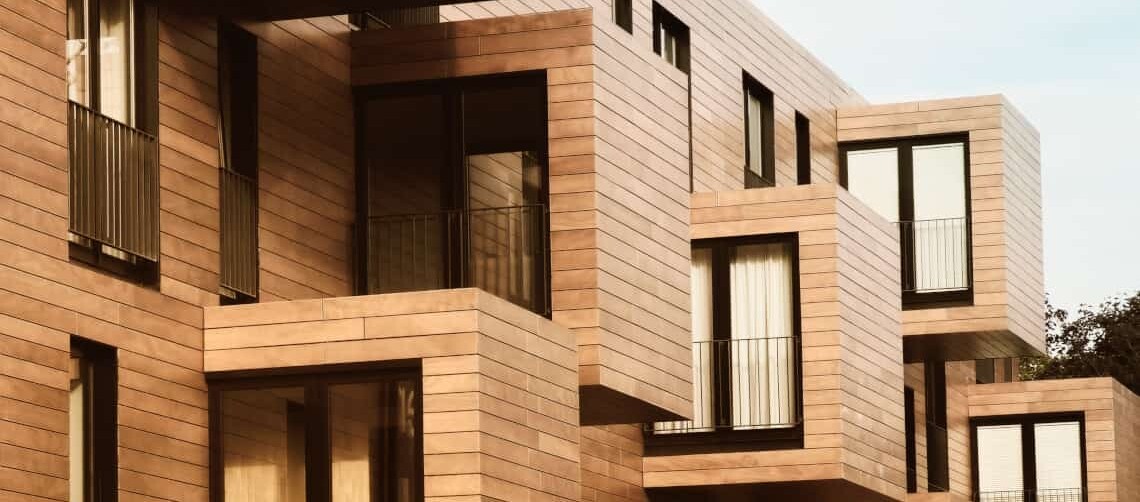Table of Content
- Modern Architecture Goes Back to Nature: Sustainable Building with Wood
- Biophilic Design: Bringing Nature into Our Homes and Workspaces
- The Benefits of Wood: Sustainability and Strength in Modern Architecture
- Iconic Wooden Constructions Around the World
- Pro-Tip
- Challenges in Wooden Construction and How to Overcome Them
1. Modern Architecture Goes Back to Nature: Sustainable Building with Wood
Wood has been a building material for thousands of years – homes, buildings and entire cultures have been shaped by it. From the intricate timber framing of Japanese temples to the grandeur of medieval European cathedrals, wood has proven itself as a timeless material.
During the industrial revolution, steel and concrete became more popular, pushing wood to the background. But today, with the growth of sustainable building practices and biophilic design, wood is making a strong return.
Here's why:
- Environmental impact: Modern architecture is increasingly focused on sustainable building to reduce the environmental footprint of the construction industry.
- In 2022, the building sector caused about one-third of global energy emissions, with 26% from building operations and 7% from producing building materials.
- In 2022, the building sector caused about one-third of global energy emissions, with 26% from building operations and 7% from producing building materials.
- Wood as a sustainable material: Wood is a renewable building material that offers a more sustainable option compared to carbon-heavy materials like steel and concrete.
- Innovative timber technology: Advancements like cross-laminated timber (CLT) and glued laminated timber (glulam) have changed wooden construction. These materials provide strength, stability and dimensional accuracy, allowing architects to design structures that were impossible with traditional timber.
2. Biophilic Design: Bringing Nature into Our Homes and Workspaces
Biophilic design is all about the relation between humans and nature. This approach is incorporating natural elements into the built environment to promote wellbeing, productivity and connection to the natural world. Wood is an integral part of creating this atmosphere.
Studies have shown that wood in interior spaces reduces stress, lowers heart rate and improves cognitive functions. For example, a study published in the Journal of Environmental Psychology found that wooden interior in office rooms led to decreased stress levels and improved well-being.
This effect is induced by our "biophilia," a term coined by biologist E.O. Wilson to describe our inherent affinity for nature. Wood with its natural warmth, texture, and visual appeal, triggers this biophilic response, creating spaces that feel more calming and restorative.
As we spend more and more time indoors, understanding and using materials like wood in our living and working spaces can help to improve our life quality.
3. The Benefits of Wood: Sustainability and Strength in Modern Architecture
Besides its biophilic benefits, wood has many other advantages in modern architecture.
- Sustainability: Wood is like a carbon sink, absorbing and storing carbon dioxide throughout its lifecycle. As a renewable resource, it can be sustainably harvested and replanted, ensuring a continuous supply for future generations.
- Structural Strength: Wood has great strength-to-weight ratios, making it suitable for various applications, from residential homes to large commercial buildings. Its lightweight nature can also reduce foundation requirements, leading to cost savings in construction.
- Aesthetic Versatility: Wood can be left natural to show off its grain and texture. Or it can be stained, painted or treated to achieve different styles.
.png)
4. Iconic Wooden Constructions Around the World
Architects are pushing wood to new limits around the world, building impressive and innovative wooden constructions that go beyond what we thought was possible with this material.
The Mjøstårnet in Norway, completed in 2019, is the world's tallest timber building at 85.4 meters (280 feet). This mixed-use tower is mostly made of CLT and shows the structural capabilities of engineered wood in high-rise construction.
Another remarkable example is the Metropol Parasol in Seville, Spain. This public space has a massive, undulating canopy made of laminated timber, creating a unique urban landmark that provides shade and shelter for visitors.
These projects, along with countless others, showcase the versatility and aesthetic potential of wood in modern architecture.
5. Pro-Tip
Don't just ask for "wood" – ask for sustainably sourced wood! Look for certifications like the Forest Stewardship Council (FSC) or the Program for the Endorsement of Forest Certification (PEFC). That way, you know the wood comes from responsibly managed forests, protecting our planet for generations to come.
6. Challenges in Wooden Construction and How to Overcome Them
While wood offers many benefits for modern architecture, it is important to address the challenges of this natural material.
One of the biggest issues is fire safety because wood is a highly flammable material. However, by using fire-resistant treatments and complying with strict building codes, the fire performance of wooden constructions can be improved substantially. This advancement makes wood as safe as steel and concrete.
Durability is another factor to consider. Wood is prone to moisture damage, insect infestation, and decay if not properly protected. A solution is to design and build in a thought-out manner and perform regular maintenance, making the timber architecture last longer.
Probably the most important part of sustainable wooden construction is responsible sourcing. To minimize environmental impact, architects and builders must prioritize sustainable timber. Certification systems like the Forest Stewardship Council (FSC) ensure that wood products come from responsibly managed forests, which supports healthy ecosystems and biodiversity.
Acknowledging these challenges allows the construction industry to use wood to its full potential, creating safe, durable and environmentally friendly buildings.
7. Conclusion
Wood is back in fashion in modern architecture because of its sustainability, biophilic benefits and structural versatility. Advances in timber technology are showing the potential of wood to reach new heights and be the solution for the future of building.
While wood itself is a remarkable sustainable building material, exciting innovations are coming that will take its use to the next level. One of those is the integration of mycelium – the root structure of fungi – with wood.
Mycelium can be grown on agricultural waste products, binding them together to create strong, lightweight and fire-resistant building materials. Imagine a future where buildings are grown, not built, with minimal environmental impact.
The combination of wood and mycelium could lead to entirely new forms and construction methods, pushing the boundaries of sustainable design even further. It can solve some of the problems associated with traditional wooden constructions, such as the need for adhesives and the limitations of wood’s structural properties.
Find Wood Suppliers for Your Project
Bois Antique SRL: Specializing in reclaimed antique wood from European barns and farms, this company crafts unique cladding, flooring, and furniture with historical character for homes and businesses across Europe.
Representaciones Ángel López SL: This family-owned wood company with 20+ years of experience offers a wide range of top-quality wood products, including beams, panels, flooring, and boards.
Luca Global Group SRL: This Bucharest-based company manufactures custom, high-quality interior and exterior wood joinery like windows, doors, and stairs for clients across Europe.
Lasva Liimpuidu AS: This Estonian company manufactures sustainable wood furniture and components from FSC-certified wood, offering durable products and services such as wood drying and finishing.

